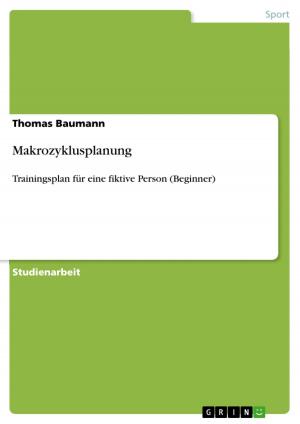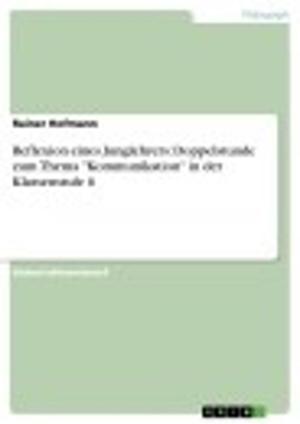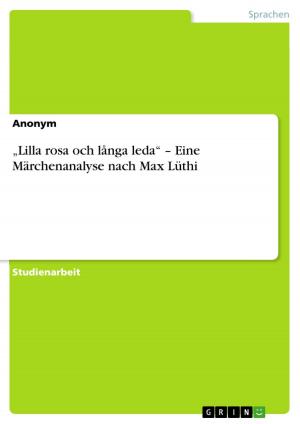On Gerhard Richter's Blur Effect. The Ambivalent Character of a Distanced Force
Nonfiction, Art & Architecture, General Art, Art Technique| Author: | Sarah Doerfel | ISBN: | 9783656610182 |
| Publisher: | GRIN Verlag | Publication: | March 6, 2014 |
| Imprint: | GRIN Verlag | Language: | English |
| Author: | Sarah Doerfel |
| ISBN: | 9783656610182 |
| Publisher: | GRIN Verlag |
| Publication: | March 6, 2014 |
| Imprint: | GRIN Verlag |
| Language: | English |
Bachelor Thesis from the year 2013 in the subject Art - Photography and Film, grade: 78 % = 1, University of Westminster (Department of Media, Arts and Design), course: Photography Dissertation, language: English, abstract: 'The strongest of Richter's effects of withdrawing the work from the viewer's gaze, is the creation of a softening blur as the final touch to all his Photo Paintings. Making the paintings, the artist firstly drafts his subject with a normally sized brush to create a 'sharp' image (Fig.3). Having finished, he would come with a broader brush or a squeegee and blur the still wet oil paint (Fig. 4) to create the photographic effect of an out-of-focus image1. The blur in these paintings is not a trace of movement of the object in the photograph. This blur is an addition to the painting that does not relate to a form of haziness in the specific photographic source image, but to the general idea of vagueness, indecisiveness, anti-definition. Therefore, it mirrors the artist's attitudes towards life in an especially expressive way. The enlargement of the usual distance between what is depicted and the viewer are the basis of this effect. At first on a quite literal level: Richter introduces another layer of depiction in these paintings by creating the depiction of a depiction of an object. This places the object of the painting further away than usual from its maker and us as viewers (Butin, 2010). Secondly, on the level of reception: an image that stays 'out-of-focus' from whichever distance we look at it rejects us, and refuses to communicate. This typical caginess of Richter's paintings, the exclusion of the recipient whom they are made for, is a striking effect in the encounter with these images. The analysis of the antithetic emotional effects of this simple but fascinating painterly technique is the theme of this essay.'
Bachelor Thesis from the year 2013 in the subject Art - Photography and Film, grade: 78 % = 1, University of Westminster (Department of Media, Arts and Design), course: Photography Dissertation, language: English, abstract: 'The strongest of Richter's effects of withdrawing the work from the viewer's gaze, is the creation of a softening blur as the final touch to all his Photo Paintings. Making the paintings, the artist firstly drafts his subject with a normally sized brush to create a 'sharp' image (Fig.3). Having finished, he would come with a broader brush or a squeegee and blur the still wet oil paint (Fig. 4) to create the photographic effect of an out-of-focus image1. The blur in these paintings is not a trace of movement of the object in the photograph. This blur is an addition to the painting that does not relate to a form of haziness in the specific photographic source image, but to the general idea of vagueness, indecisiveness, anti-definition. Therefore, it mirrors the artist's attitudes towards life in an especially expressive way. The enlargement of the usual distance between what is depicted and the viewer are the basis of this effect. At first on a quite literal level: Richter introduces another layer of depiction in these paintings by creating the depiction of a depiction of an object. This places the object of the painting further away than usual from its maker and us as viewers (Butin, 2010). Secondly, on the level of reception: an image that stays 'out-of-focus' from whichever distance we look at it rejects us, and refuses to communicate. This typical caginess of Richter's paintings, the exclusion of the recipient whom they are made for, is a striking effect in the encounter with these images. The analysis of the antithetic emotional effects of this simple but fascinating painterly technique is the theme of this essay.'















